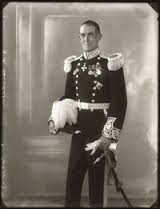
Governor Bernard Bourdillion
Nigeria’s history of federalism can be dated back to 1939, when Governor Bernard Bourdillon divided the nation into the three provinces of the North, West, and East. The regions that Arthur Richard’s Constitution later established in 1946 were the result of Governor Bernard Bourdillion’s (1935–1943) recommendation to replace the provinces. A Federal structure was introduced by the Richards constitution, but it ultimately fell short of its original goal. The House of Representatives was a feature of Governor Macpherson’s 1953 constitution, which was an improvement over Richard’s. With the ability to enact national law and Regional Houses of Assembly with the ability to enact regional law. A federal system of government was later implemented for the nation in 1954 under the Lyttleton constitution. This was as a result of the constitutional conference that took place in London in 1953 (1953 London Constitutional Conference), where it was decided that Nigeria should become a Federal State.
Federalism is a form of government in which the central government and other subunits, such as local governments, are constitutionally given equal authority. G. In Nigeria, there were only the central and regional governments in 1954, not the state/regional or local governments. The constitution distributed to them certain powers and duties. Exclusive legislative duties were intended for the central government, concurrent duties were intended for the central and regional governments, and residual duties were intended for the regions.
Here are some explanations for why Nigeria adopted federalism.
* Cultural diversity.
* Concern over minorities gaining power.
* The nation’s overall size.
* The location of the region.
* Bringing the government closer to the people.
People.
Colonial policy of the British.
* Aspect of the economy.
* Good management.

